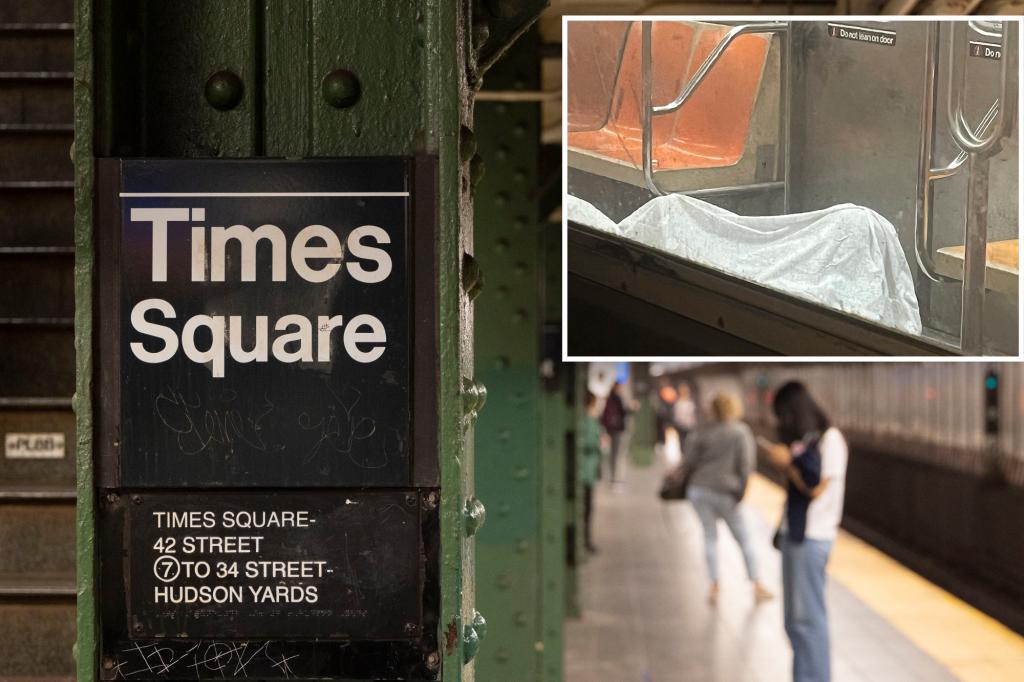On a Sunday afternoon in the bustling heart of New York City, a somber discovery unfolded within the confines of a southbound 1 train at the Times Square subway station. An unidentified man, estimated to be between 60 and 70 years old, was found unresponsive and unconscious by fellow passengers. The distressing scene prompted a concerned rider to alert authorities, setting in motion a response that would ultimately confirm the man’s tragic demise. First responders arrived around 4 p.m., but their efforts were in vain. The man, seemingly homeless, was pronounced dead at the scene, leaving behind a poignant reminder of the vulnerabilities faced by those living on the margins of society.
The initial investigation revealed no visible signs of trauma, and authorities indicated no suspicion of foul play. While the exact cause of death remains to be determined by the medical examiner’s office, the incident underscores the precarious circumstances often endured by individuals experiencing homelessness, particularly within the complex and challenging environment of a major urban center. The man’s passing serves as a stark illustration of the systemic issues contributing to homelessness and the urgent need for comprehensive support networks to address this pervasive societal challenge.
The discovery of the deceased man inevitably disrupted the flow of the city’s vital transportation network. The 1, 2, and 3 train lines experienced delays in both directions as police meticulously investigated the scene. The ripple effect of this tragic event extended beyond the immediate vicinity, momentarily impacting the commutes of countless individuals and highlighting the interconnectedness of urban life. The disruption, while inconvenient, served as a somber backdrop to the unfolding human tragedy, reminding commuters of the shared space they occupied with individuals facing diverse and often unseen struggles.
This incident resonates with a similar, equally heartbreaking event that transpired just weeks prior. In the frigid temperatures of late winter, another apparent homeless man, tragically young at only 27, was found deceased in Central Park near Rumsey Playfield. The recurring pattern of such discoveries underscores the persistent challenges faced by individuals experiencing homelessness, particularly during periods of extreme weather. These incidents serve as stark reminders of the vulnerability of those living without stable shelter and the urgent need for enhanced resources and outreach efforts to provide support and prevent further tragedies.
The discovery of these deceased individuals within public spaces raises critical questions about the adequacy of existing social safety nets and the effectiveness of programs designed to address homelessness. The fact that both men were found in highly visible locations – a busy subway station and a prominent park – suggests a potential breakdown in the systems meant to identify and assist those in need. These incidents underscore the importance of proactive outreach strategies, increased availability of affordable housing, and comprehensive support services to address the root causes of homelessness and provide pathways to stability and well-being.
The recurring nature of these tragedies calls for a renewed focus on addressing the systemic issues that contribute to homelessness. Beyond the immediate provision of shelter and basic necessities, a holistic approach is required, encompassing mental health services, addiction treatment, job training, and access to affordable housing. These incidents serve as a poignant reminder of the shared responsibility to create a more just and equitable society where everyone has access to the fundamental resources necessary for a dignified and fulfilling life. The ongoing challenge of homelessness demands a sustained commitment from individuals, communities, and government agencies to work collaboratively towards effective solutions and prevent further loss of life.

